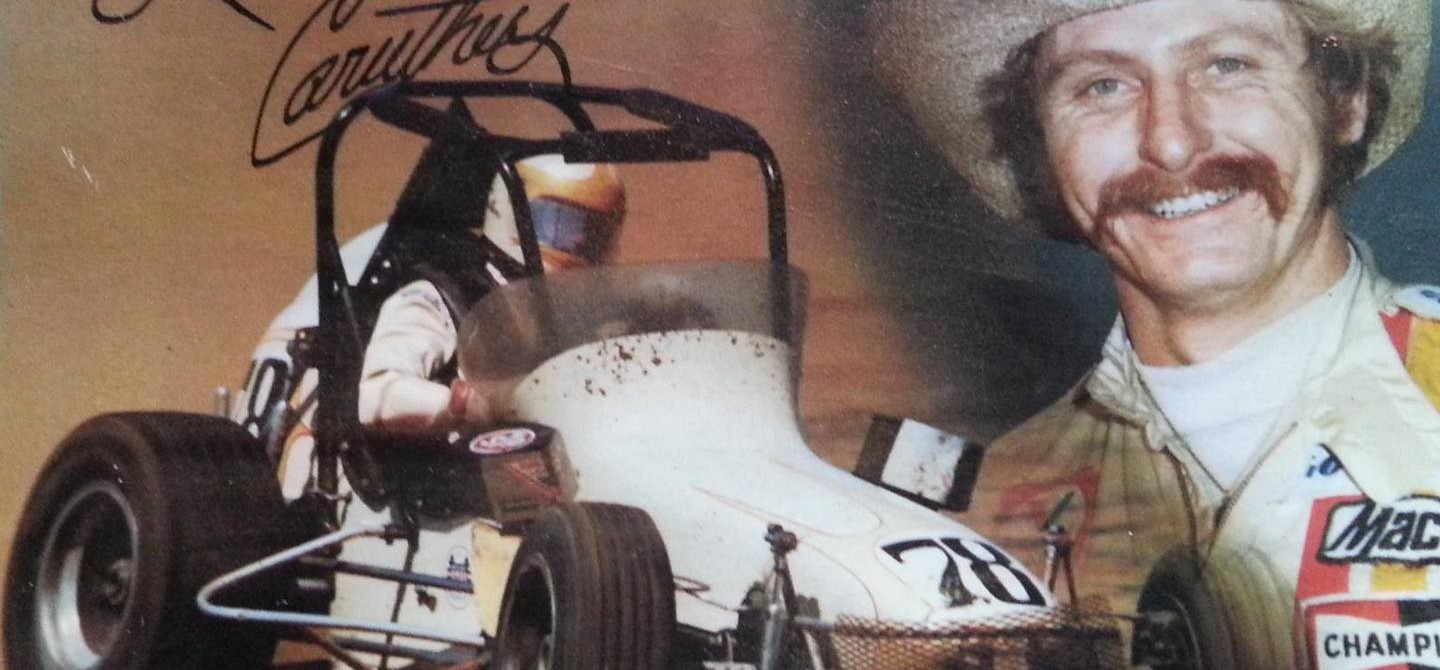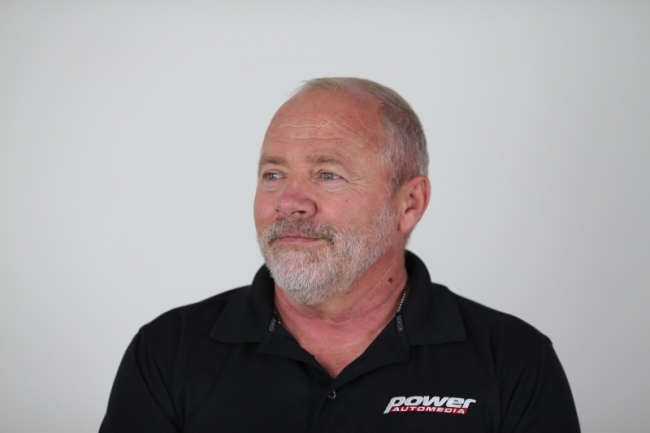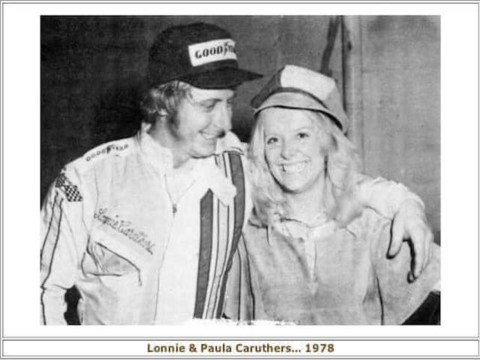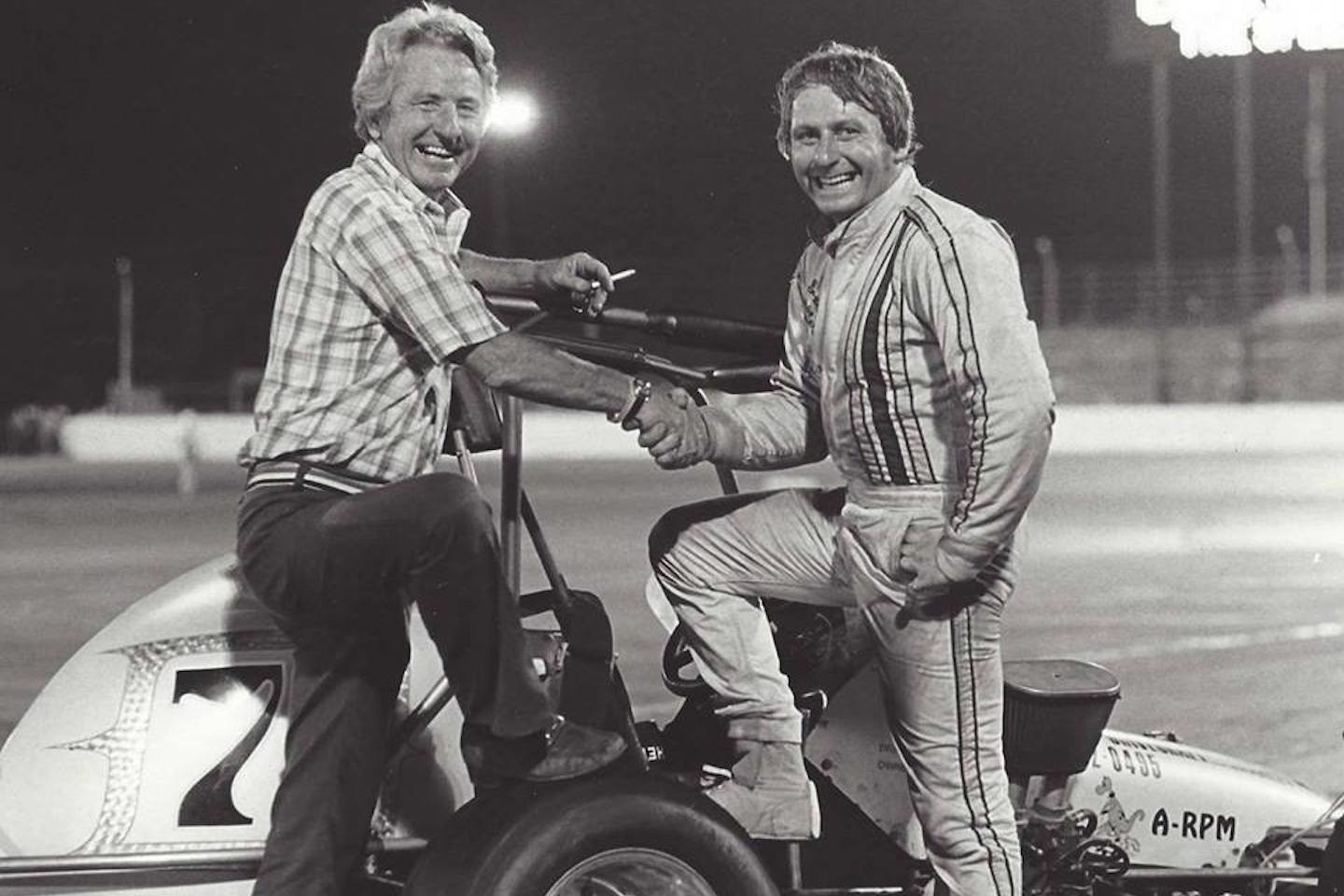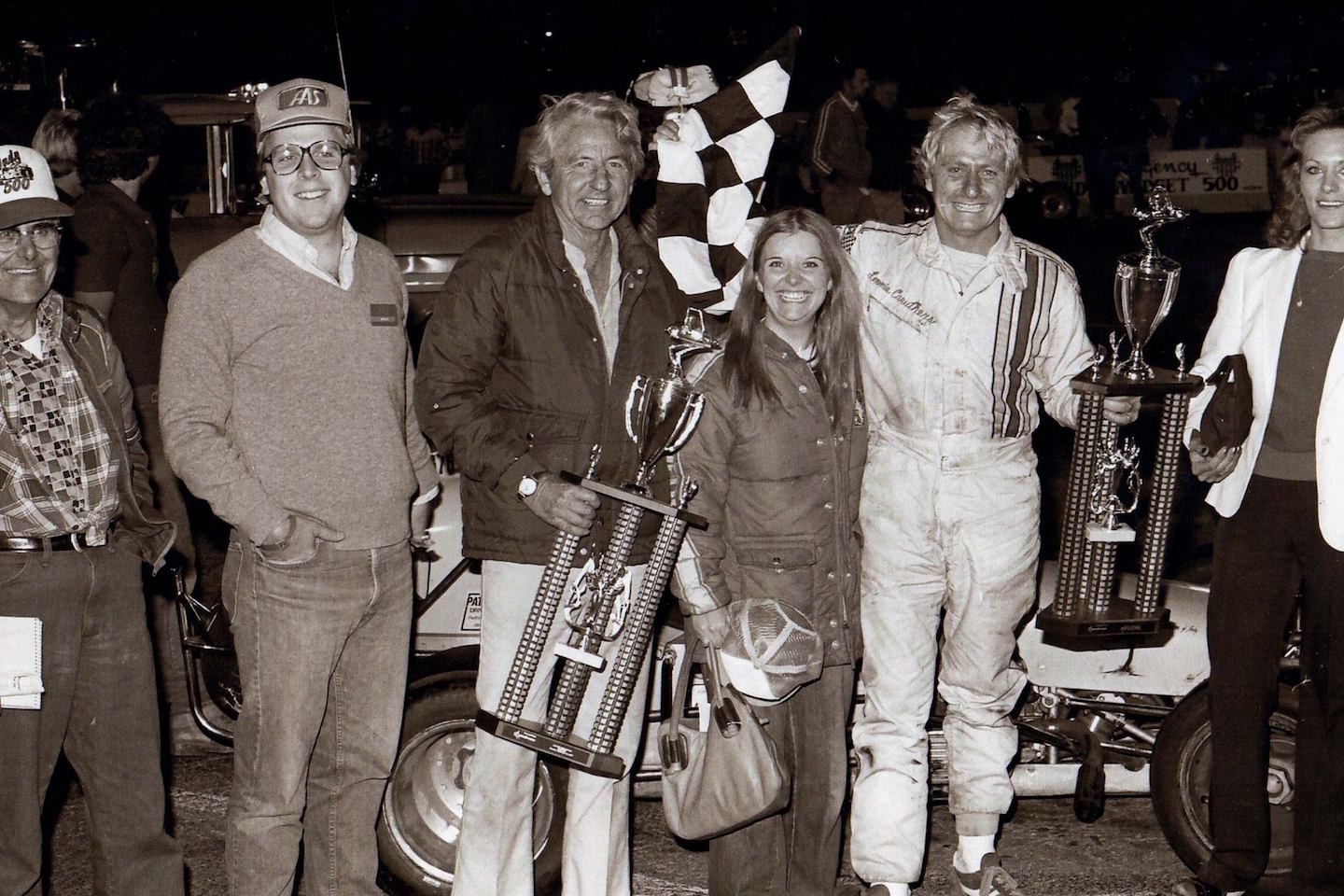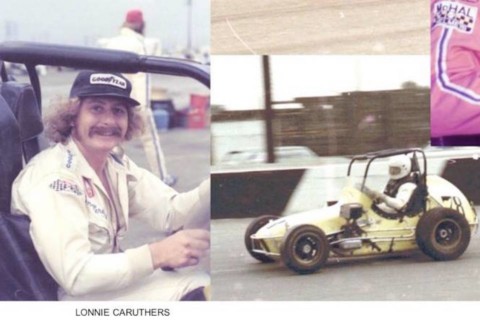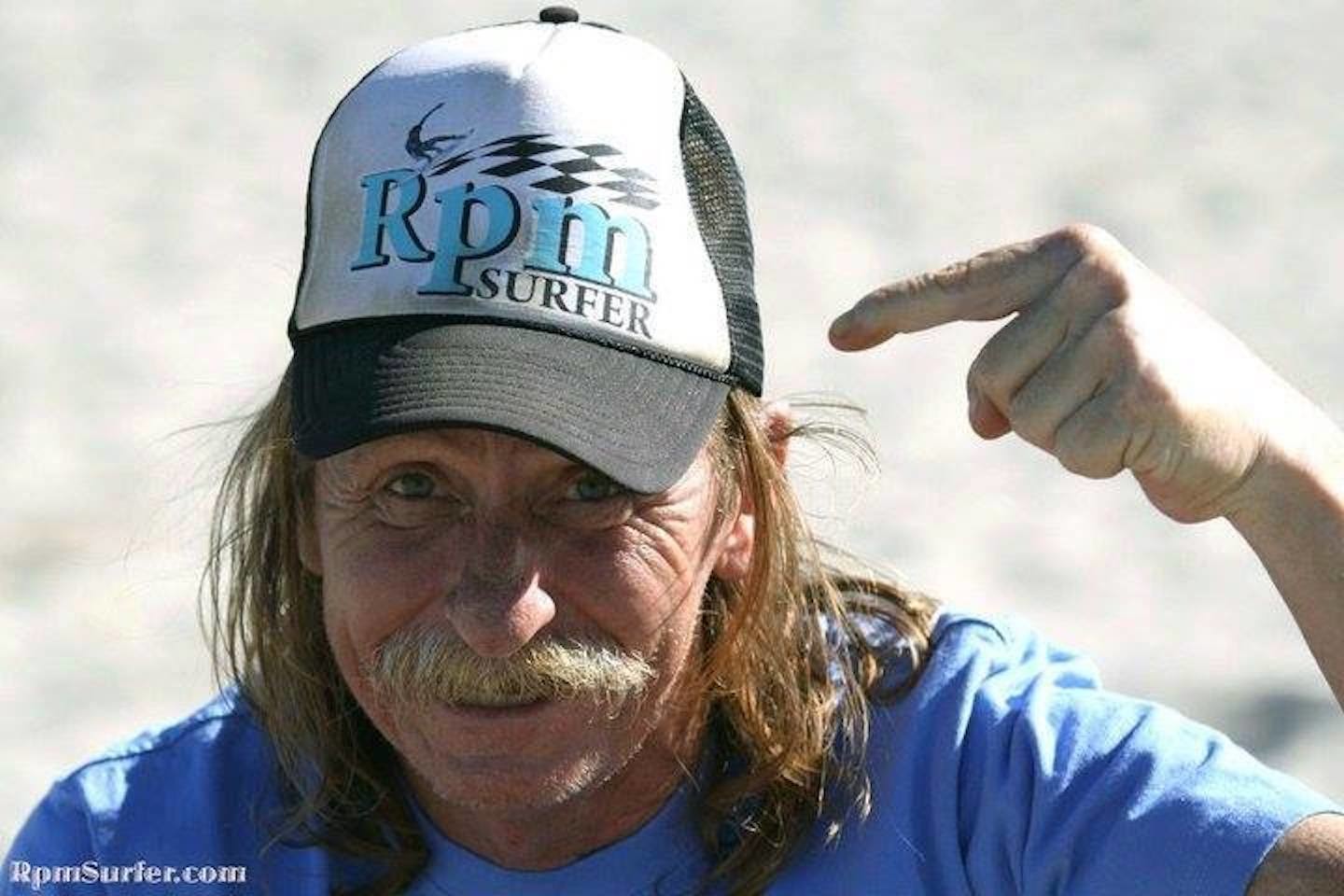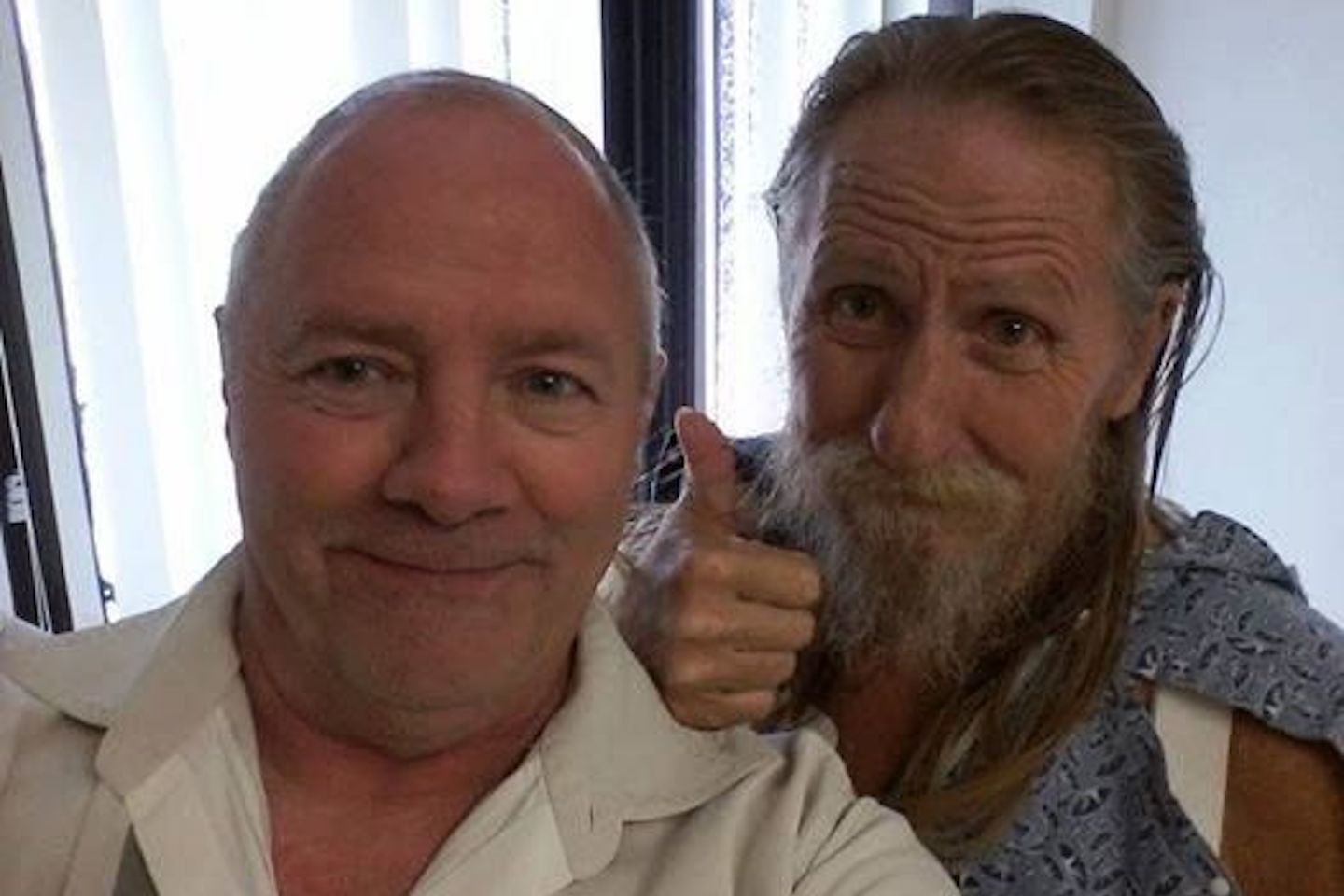Facebook can be a wonderful thing. Case in point; as an Editor for a digital dirt track magazine, I have been subject to the modern racing world and all the personalities that come with it. Being able to witness these competitors in the pit areas and on the track is one of those jobs that everyone would love to have – and I’ve taken advantage of meeting most of the current crop of racers over that past 15-years. That alone would be enough to make this one of the most enjoyable jobs in the industry. Yet, there are additional benefits that often come to light. One of those benefits is the connection to racers from the past via social media accounts.
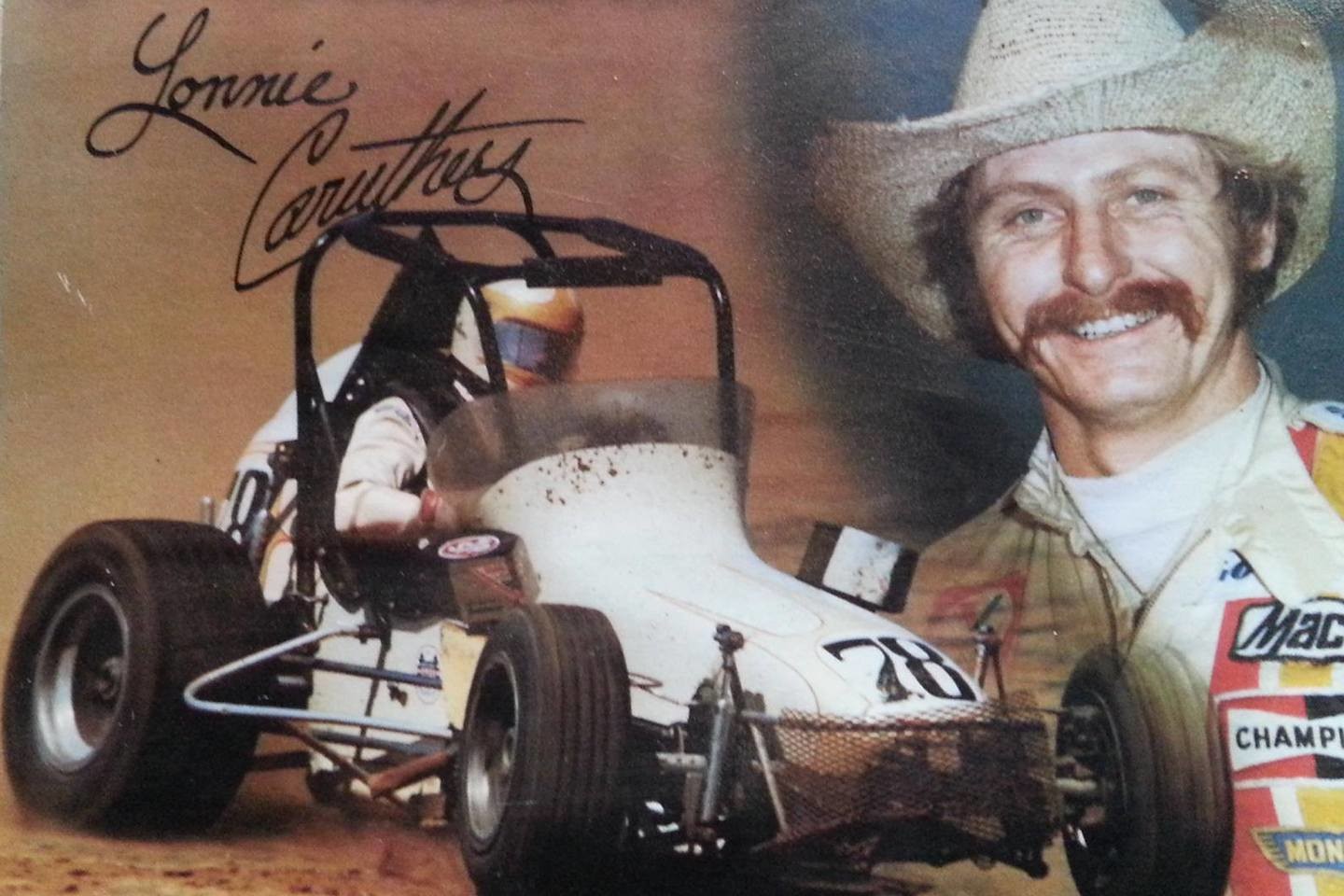
Lonnie Caruthers, 1978 USAC National Midget Racing Rookie of the Year. (Photos are from Lonnie’s Facebook page)
My path crossed with Lonnie Caruthers in 2013, when he contacted me through Facebook. The Caruthers family is well-known in Midget auto racing. Doug Caruthers and his brother, L.T. “Red” Caruthers, moved to California from Kansas when they were in their teens. Both became interested in circle track racing and found their true passion for building cars and equipment for racers. Doug’s sons, Jimmy and Danny, both went on to become USAC National Midget Champions. Red Caruthers built, repaired, and prepped a lot of cars for Jimmy and Danny, as well as for his own son, Lonnie.
Lonnie Caruthers, The Racer
Lonnie started racing quarter midgets in Southern California, along with his cousins and another future superstar, Sleepy Tripp. This was as competitive as it gets and someone from this stable was going to win each time they went to the track. They grew up and raced together. They advanced in divisions together. By all accounts, Lonnie was as tough as anyone else on the track but seemed to have a thoughtful and caring nature.
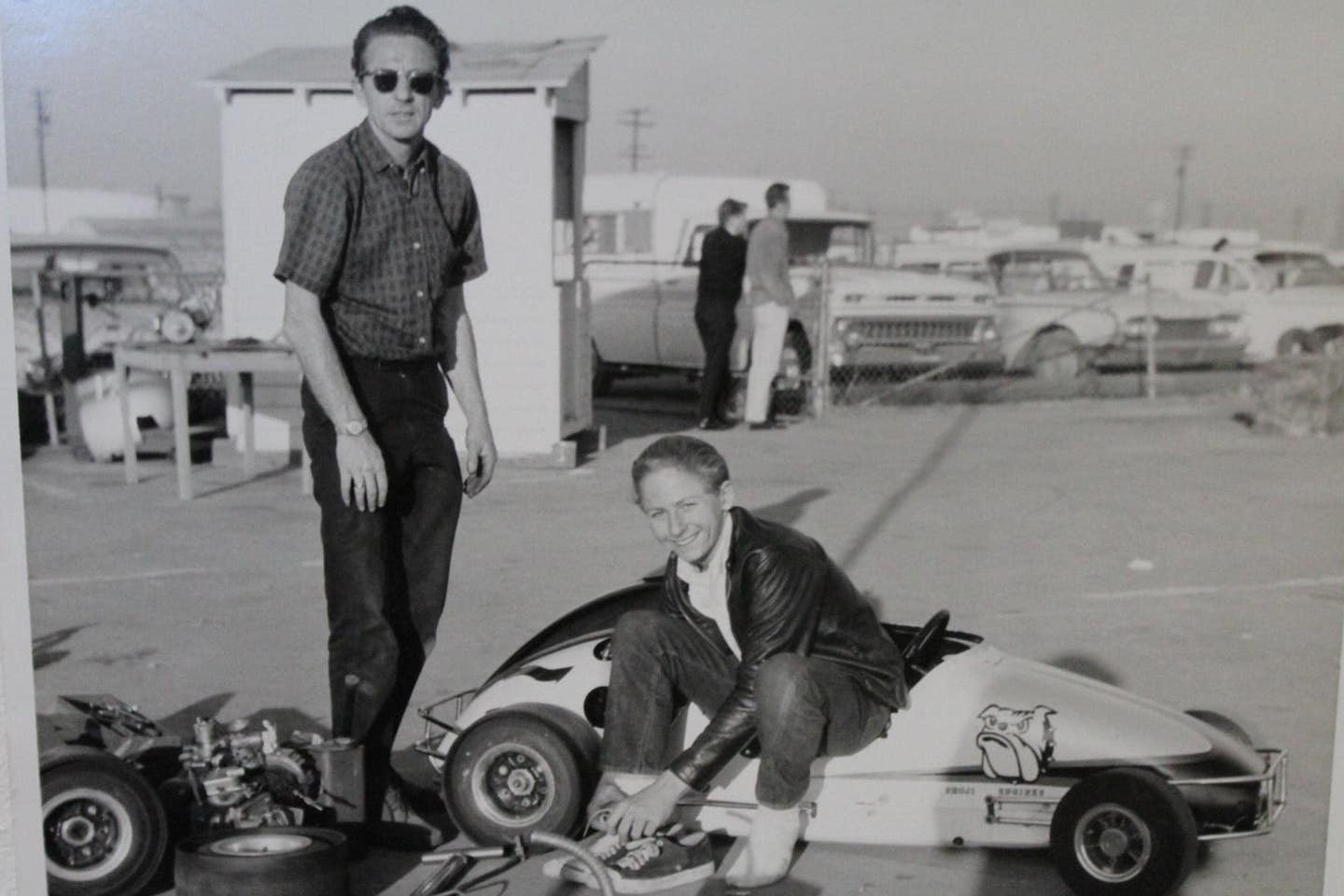
“I grew up in racin’,” Lonnie said. Here he is with his father “Red” Caruthers during their Quarter Midget racing days.
He endured losing his cousins, Jimmy first, then Danny, along with other friends and fellow racers. These things took a toll on the young driver and may have caused him to get out of racing prematurely. His father was one of the early builders of the VW Midgets, building the first VW-powered Midget to win a race in 1973. When Lonnie entered Midget racing in 1976, he drove a VW-powered car built by his father. The expectations for greatness was very high. This added even more pressure to the sensitive driver. Around this time is when Lonnie met the love of his life, Paula Hunt.
Paula traveled with Lonnie, helping work on his car. They came up with a novel approach to working with standard and metric nuts and bolts that were used on the VW Midgets. They painted the bolts on the car different colors by size, then painted the wrenches the same colors by the size of the bolts or nuts they fit. It worked and made a huge difference. According to Lonnie, this “was all Paula’s doing.” Observers noted that she could change gears in the rearend as quickly as anyone else in the pits.
USAC Racing 1977-1982
In 1977, his first full-year of USAC National Midget competition, Lonnie finish 8th in the standings and won Rookie of the Year. In 1978, he finished in 6th place for the season. He earned his first series win in 1979 at the Springfield Speedway in Illinois, then took another win a few weeks later at Lincoln Park Speedway in Putnamville, Indiana. He wrapped up a solid 6th place in the National standings for the year.
The following year, 1980, would be Lonnie’s career year. He took home three USAC National victories (Tri-State Speedway, Indianapolis Speedrome, and Whitewater Valley Speedway) earning him 4th place in the season standings.
It was in 1982 when Lonnie earned the victory that he was most proud of. The 500 lap non-points USAC Midget event at the Indianapolis Speedrome was his personal favorite. According to Lonnie, the 500 laps were less than 100 miles, and his crew chief, Mac Miller, felt they could make the race without stopping. They rigged the car with a 27-gallon tank and a smaller 127 cubic-inch engine to compete against the 140 cubic-inch engines everyone else was using.
Once they had the setup to go “non-stop,” they entered the race, only to find out there was a mandatory “driver-out-of-the-car” pit stop. They took their mandatory pit stop early (lap 10), getting the driver out and back into the car quickly, losing only 7 laps in the evolution. “The rest of the cars started pitting around the halfway point and they were adding fuel. Their pit stops cost them 12 or more laps, and by the end of the race, we had them by four of five laps.” Because of this performance, the rules were changed the next year to have required pit stops between laps 200 and 300.
Bed And Breakfast And Beyond
After Lonnie hung up his racing helmet, he and Paula bought and operated a bed and breakfast in Rockville, Indiana. According to Lonnie, they owned a farm in the Winchester area of Southern California for a while, with investments here and there. Things seemed to be going along well, but Lonnie’s wife was battling a long-term disease that eventually ended her life on Sept. 30, 1998. Needless to say, Lonnie was crushed and the hypersensitive man turned into a lost soul searching for something.
Putting away everything else, Lonnie took up his lifelong hobby of photography. “Racin’ is what I grew up on,” he said, “But I hung up my racin’ helmet and traded it for a camera and a surfboard. Then I moved to Mexico for the next 10-plus years from 2003 to 2015.” He became known as RPM Surfer, a photographer that took action shots of the surfing action in his adopted home of Puerto Escondido, Oaxaca, Mexico.
Where Our Paths Crossed
One day in 2013, shortly after I had experienced a massive coronary event, Lonnie hit me up Facebook. First with a “friend request” then a nice message to let me know “Don’t worry. Every little thing is going to be okay.” He would repeat that statement often over the next seven years. We chatted about our ailments, religion, and what we thought would happen in the afterlife. We talked about racing. We talked about girls. Sometimes… we just talked about nothing.
He would tell me how damaged his brain was… yet he was always keen on facts. He remembered details of the races and his life very well. And, he was always competitive. His text conversations with me would go like this: “We have a deep love for racin’ that we share. I’m doing fine (I guess). Just exhausted all of the time. It sucks. Not to mention 98-percent of dead brain cells on the right-side brain. My fuel pump is only putting out a 33-percent injection compared to a healthy heart that puts out 75-percent. Stoked you’re doing super well, but either way, I’m ready to kick your butt in our wheelchair or hospital bed race, ha ha ha!”
Lonnie never stopped loving the ladies either. Even with cardiac issues threatening his life, he would notice a pretty doctor or nurse. “I have a new crew of cardio doctors and 7 or 8 of them are amazingly HOT. Which helps keep my low blood pressure pumpin’,” he would write.
At some point, he lost his computer, then started losing his health. He would disappear for months, then a couple of years before resurfacing. One of his faithful longtime friends made a post last Friday that Lonnie was in hospice and his organs were shutting down. She asked for prayers. A few hours later she reported that Lonnie had crossed the finish line and gotten the checkered flag at 7:00 p.m.on May 8, 2020. He was 71 years old.
I will miss my friend and think of him often. Beyond the pain of losing another kindred heart, we can all rejoice that Lonnie is no longer a lost soul. I choose to believe that he is with Paula, his cousins, and once again with his father. Race in peace Lonnie. Don’t worry – Every little thing gonna be alright.


